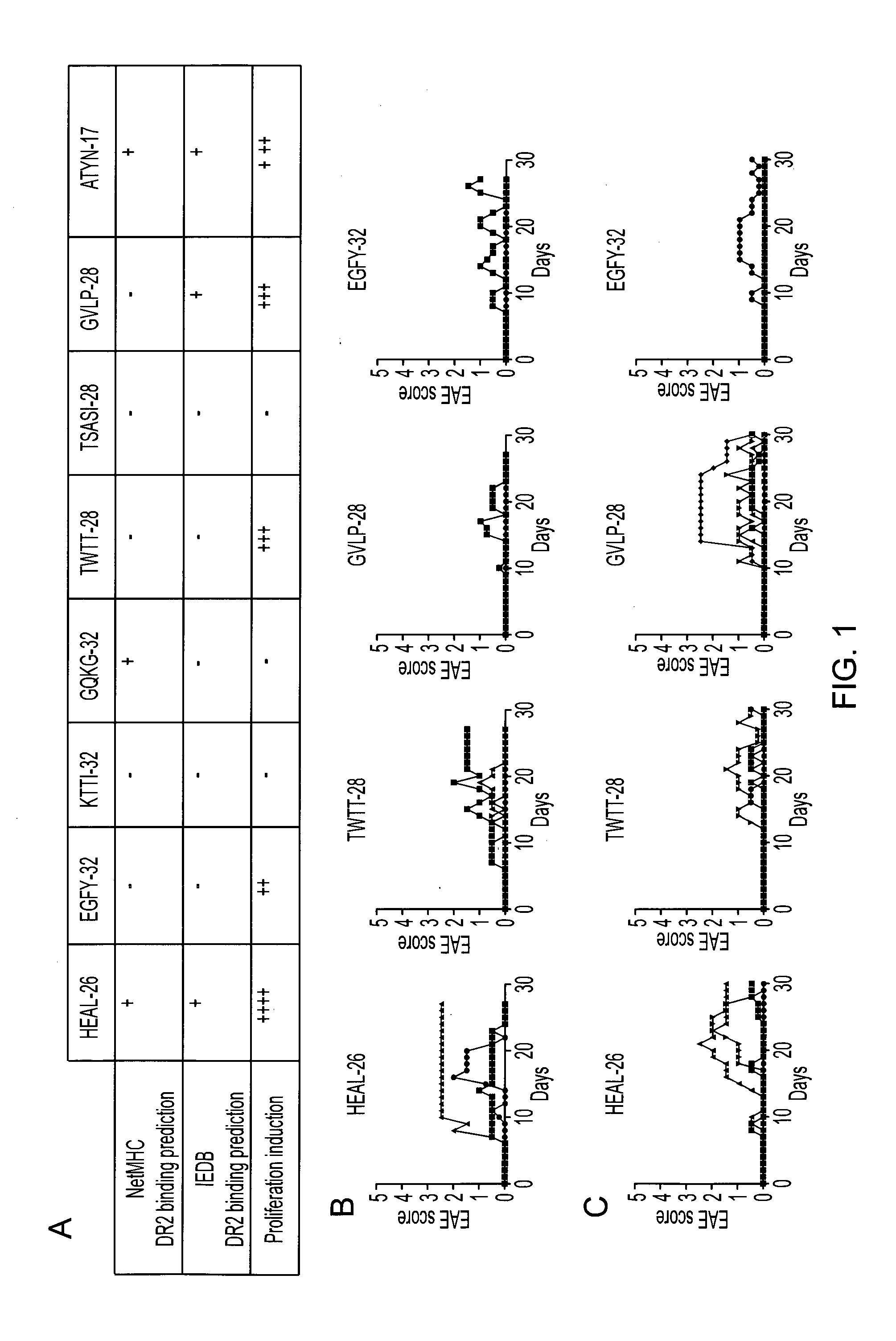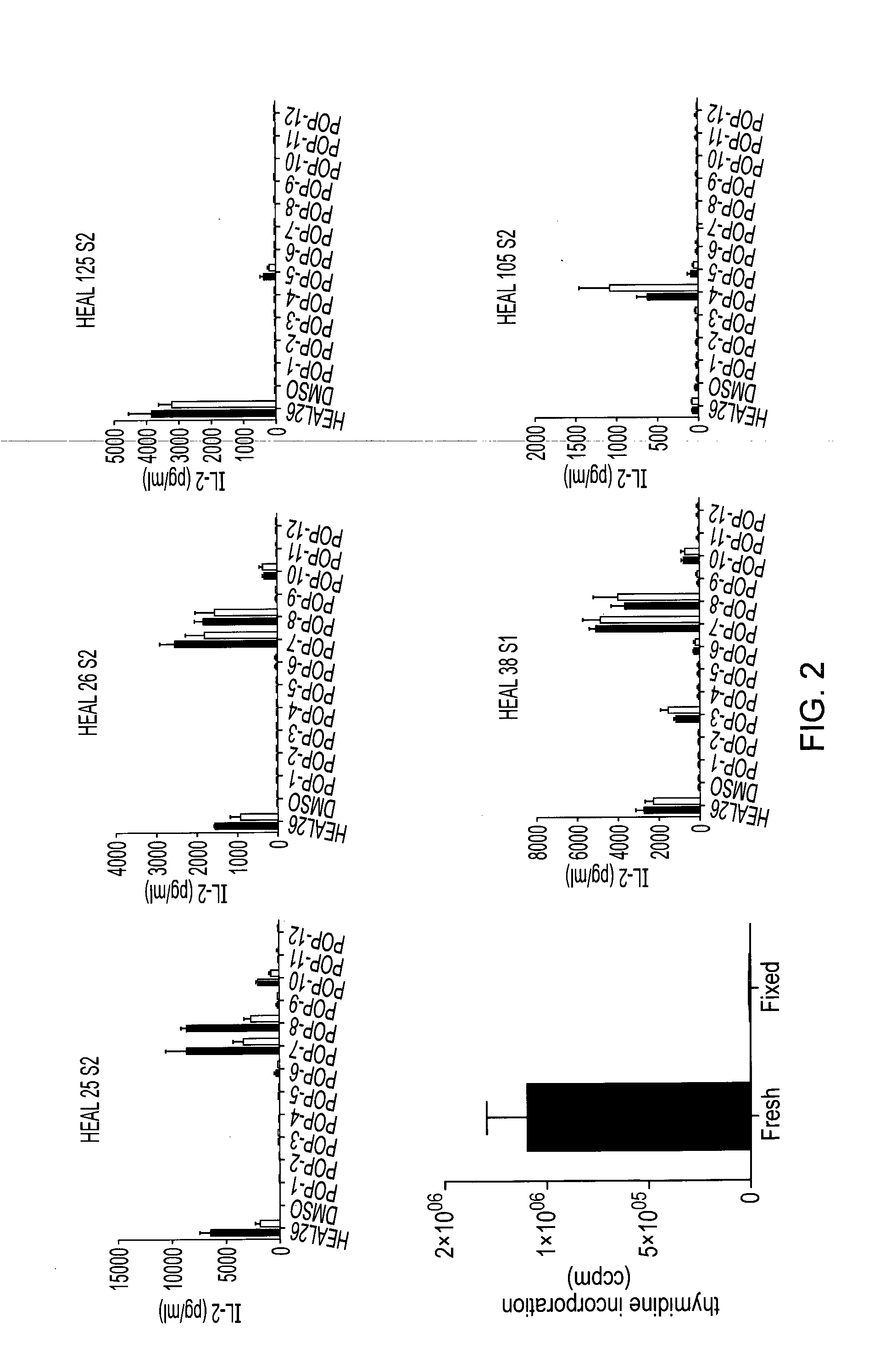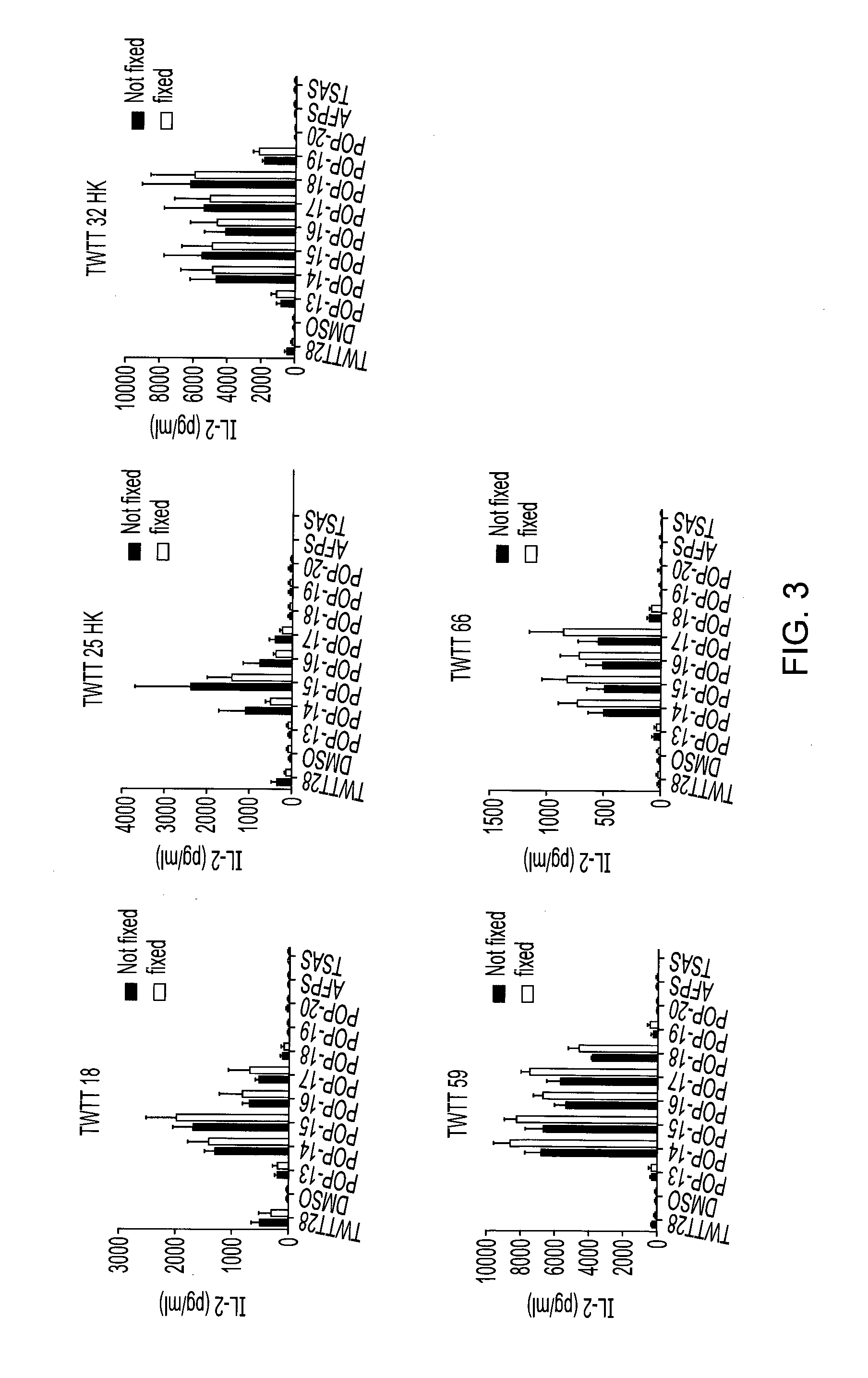Peptide
a technology of peptides and proteins, applied in the field ofchronic degenerative disease affecting, can solve the problems of many current ms therapies that have been associated with adverse effects or are poorly tolerated, and achieve the effect of prevention and/or treatmen
- Summary
- Abstract
- Description
- Claims
- Application Information
AI Technical Summary
Benefits of technology
Problems solved by technology
Method used
Image
Examples
example 1
Investigation of Hydrophilic Sections of the Proteolipid Protein (PLP) Sequence
[0108]Materials and Methods
[0109]Antigens
[0110]Since PLP is a largely hydrophobic protein, it was necessary to use the hydrophilic portions of the sequence. To this end, hydropathicity studies were carried out and eight peptides were synthesized from the hydrophilic domains of the PLP molecule, as follows:
36-61 (26mer):HEALTGTEKLIETYFSKNYQDYEYLI-NH288-119 (32mer):EGFYTTGAVRQIFGDYKTTICGKGLSATVTGG-NH2104-135 (32mer):KTTICGKGLSATVTGGQKGRGSRGQHQAHSLE-NH2119-150 (32mer):GQKGRGSRGQHQAHSLERVCHCLGKWLGHPDK-NH2179-206 (28mer):TWTTCQSIAFPSKTSASIGSLCADARMY-NH2192-219 (28mer):TSASIGSLCADARMYGVLPWNAFPGKVC-NH2207-234 (28mer):GVLPWNAFPGKVCGSNLLSICKTAEFQM-NH2260-276 (17mer):ATYNFAVLKLMGRGTKF -NH2
[0111]For each peptide, in silico studies were carried out to predict DR2 (HLA-DRB1*1501) binding capacity, and in vitro (proliferation assay) and in vivo (EAE induction) studies were carried out to investigate response. The resul...
example 2
Identification of Apitopes Within HEAL-26
[0113]A panel of 15-mer overlapping peptides spanning HEAL-26 was synthesized using standard F-moc chemistry. Each peptide was displaced by 1 amino acid, as shown below:
HEAL-26peptideSequencePOP-1HEALTGTEKLIETYFPOP-2EALTGTEKLIETYFSPOP-3ALTGTEKLIETYFSKPOP-4LTGTEKLIETYFSKNPOP-5TGTEKLIETYFSKNYPOP-6GTEKLIETYFSKNYQPOP-7TEKLIETYFSKNYQDPOP-8EKLIETYFSKNYQDYPOP-9KLIETYFSKNYQDYEPOP-10LIETYFSKNYQDYEYPOP-11IETYFSKNYQDYEYLPOP-12ETYFSKNYQDYEYLI
[0114]The peptides were analysed using HEAL-26 specific hybridomas from DR2 mice. Of these peptides, POP-4, POP-7 and POP-8 were identified as apitopes.
example 3
Identification of Apitopes Within TWTT-28
[0115]A panel of 15-mer overlapping peptides spanning TWTT-28 was synthesized using standard F-moc chemistry. Each peptide was displaced by 1 amino acid. Peptides were analysed using TWTT-28 specific hybridomas from DR2 mice.
[0116]The peptides POP-14 to POP-18 were identified as apitopes, having the following sequences:
TWTT-28peptidesSequencePOP-14WTTCQSIAFPSKTSAPOP-15TTCQSIAFPSKTSASPOP-16TCQSIAFPSKTSASIPOP-17CQSIAFPSKTSASIGPOP-18QSIAFPSKTSASIGS
PUM
| Property | Measurement | Unit |
|---|---|---|
| Composition | aaaaa | aaaaa |
Abstract
Description
Claims
Application Information
 Login to View More
Login to View More - R&D
- Intellectual Property
- Life Sciences
- Materials
- Tech Scout
- Unparalleled Data Quality
- Higher Quality Content
- 60% Fewer Hallucinations
Browse by: Latest US Patents, China's latest patents, Technical Efficacy Thesaurus, Application Domain, Technology Topic, Popular Technical Reports.
© 2025 PatSnap. All rights reserved.Legal|Privacy policy|Modern Slavery Act Transparency Statement|Sitemap|About US| Contact US: help@patsnap.com



